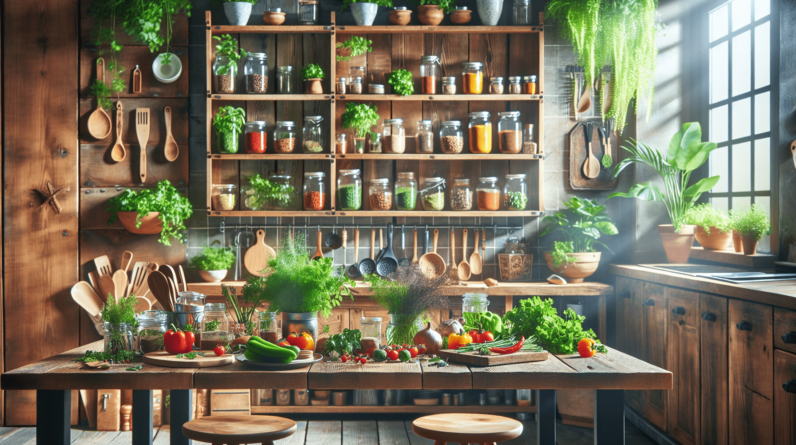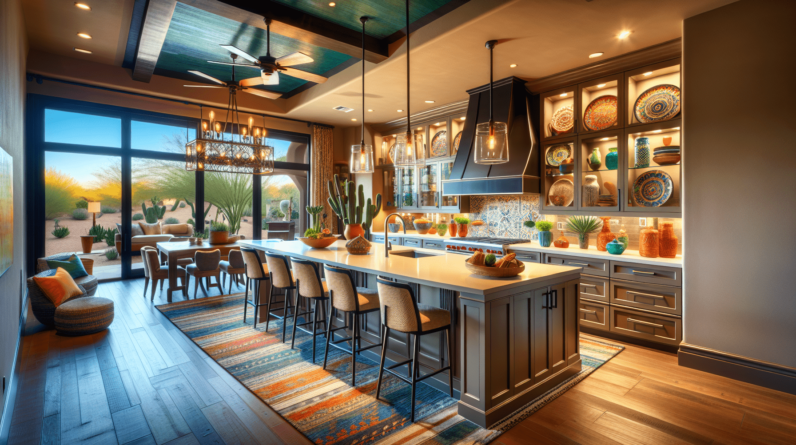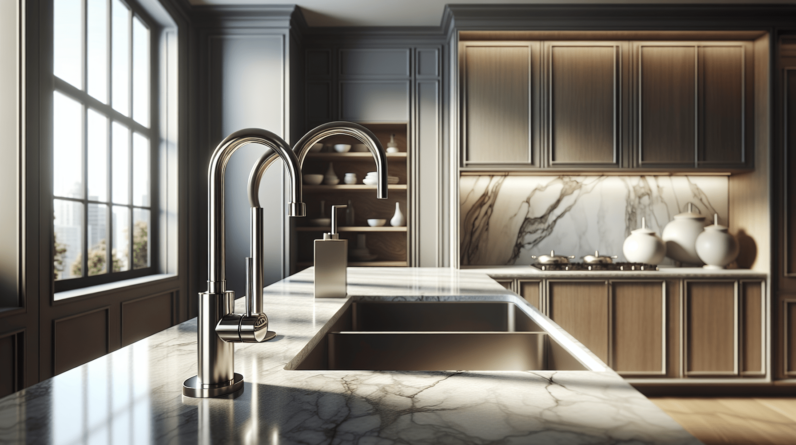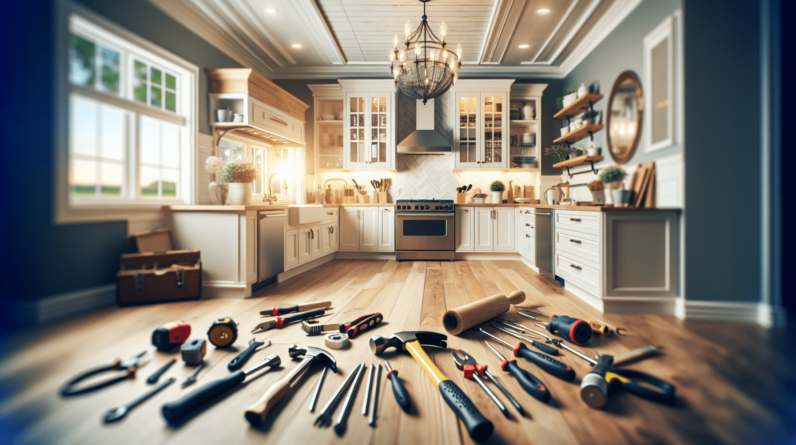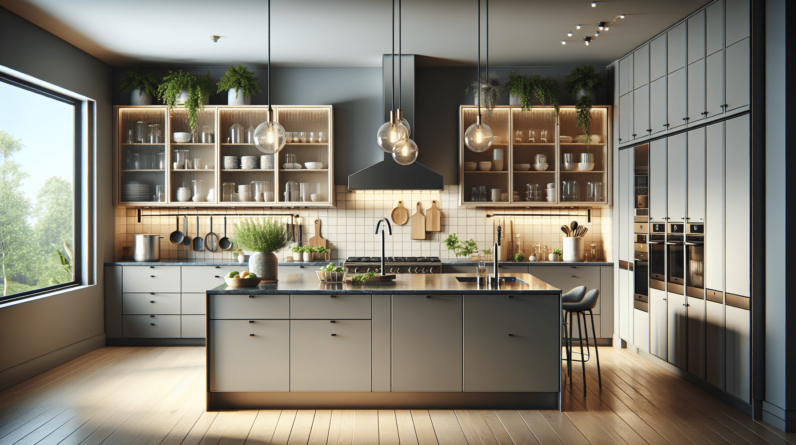

Have you ever looked at your galley kitchen and thought it could use a fresh new look? Many homeowners feel the same way, and remodeling a galley kitchen can enhance its functionality and aesthetic appeal. This guide will help you navigate the journey of transforming your kitchen into a space that suits your needs while showcasing your personal style.

Understanding Galley Kitchens
A galley kitchen, characterized by its narrow shape and two parallel walls with a walkway in between, can feel cramped but has great potential for efficiency. This layout is often found in smaller homes or apartments, making it essential to utilize every square inch wisely.
Benefits of a Galley Kitchen
The galley kitchen layout is not without advantages. You may find that it fosters a highly functional workspace, allowing for easy movement between the stovetop, sink, and refrigerator—areas often referred to as the work triangle. This design can significantly streamline your cooking and prepping process, making it not just practical but also enjoyable.
Assessing Your Current Space
Before diving into any remodeling project, it’s crucial to evaluate your current kitchen’s layout and features.
Identify Your Challenges
What challenges do you face with your current galley kitchen? Is it the lack of space, outdated appliances, or perhaps insufficient storage? By identifying these issues, you can prioritize what needs the most attention during your remodel.
Consider Your Lifestyle
Your lifestyle plays a significant role in how you should remodel your kitchen. Do you cook frequently, host gatherings, or prefer quick meals? Understanding how you use your kitchen can guide your design choices to better accommodate your habits.
Setting a Budget
When it comes to remodeling, establishing a budget is crucial. It lays the foundation for what changes are feasible without breaking the bank.
Determining Your Budget
Begin by determining how much you are willing to spend on the remodel. This includes everything from materials to labor costs. Consider allocating additional funds for unexpected expenses, as renovations often reveal hidden issues.
Cost Breakdown
Getting a clear estimate of potential costs can help you maintain control over your budget. Here’s a simple breakdown to guide you:
| Item | Estimated Cost Range |
|---|---|
| Cabinets | $3,000 – $8,000 |
| Countertops | $2,000 – $5,000 |
| Flooring | $1,500 – $4,000 |
| Appliances | $3,000 – $10,000 |
| Labor | $2,000 – $5,000 |
| Hardware & Fixtures | $500 – $1,500 |
| Total | $12,000 – $34,000 |
This table can provide a rough estimate, but prices can vary based on quality, brand, and labor rates in your area.
Design Planning
Now it’s time to design your new space. This phase can be exciting because you get to envision how your galley kitchen will look and function.
Selecting a Style
Choosing a style is one of the most enjoyable parts of a remodel. Do you prefer modern, rustic, or perhaps a classic look? Researching different styles can inspire your design plans.
Creating a Layout
Make sure to create a layout that optimizes space while considering the work triangle. Incorporate design elements that add function and flow to your kitchen.
Choosing Colors and Materials
Colors and materials can dramatically change the perception of space. Lighter colors can make a small kitchen feel larger, while darker tones can add warmth. Consider materials that are not only stylish but also durable and easy to maintain.
Storage Solutions
One of the primary concerns in a galley kitchen is storage. Lack of storage can lead to clutter, which affects the overall functionality of your space.
Utilize Vertical Space
When floor space is limited, think vertically. Installing shelving or cabinets that reach up to the ceiling can provide additional storage areas for items you don’t use frequently.
Multi-Functional Furniture
Consider incorporating furniture that serves more than one purpose. A kitchen island can provide extra counter space, storage, and even seating when designed properly.
Smart Organizers
Utilizing kitchen organizers can greatly improve the functionality of your galley kitchen. Use drawer dividers, pull-out shelves, or lazy Susans to maximize space and keep items accessible.

Choosing Appliances
Selecting the right appliances is pivotal to your kitchen’s performance and style.
Size Matters
In a galley kitchen, every inch counts. Make sure to choose compact, yet powerful appliances to optimize your kitchen workflow without overwhelming the space.
Energy Efficiency
Opt for energy-efficient models that save you money in the long run. Look for appliances with the Energy Star label, which indicates that they meet high energy efficiency standards.
Style and Finish
Consider the finish of your appliances to ensure they complement your kitchen design. Stainless steel, black matte, or even colorful options can set the tone for your kitchen’s style.
Flooring Considerations
The flooring you choose can influence the overall look and feel of your galley kitchen.
Material Options
There are various materials to consider:
| Material | Pros | Cons |
|---|---|---|
| Hardwood | Classic look, durable | Can be expensive, moisture-sensitive |
| Tile | Wide range of designs | Cold underfoot, harder to install |
| Laminate | Affordable, various styles | Less durable than wood |
| Vinyl | Water-resistant, affordable | Can be less stylish |
| Cork | Comfortable underfoot | Can be damaged by moisture |
Choose a material that aligns with your style and practical needs, from durability to aesthetic appeal.
Lighting Options
Good lighting can elevate your kitchen’s ambiance and functionality.
Layered Lighting
Incorporating multiple layers of lighting can help brighten up your galley kitchen. Focus on three main types: ambient, task, and accent lighting.
- Ambient Lighting: This is the main source of light, typically provided by overhead fixtures.
- Task Lighting: Focuses on work areas, like under-cabinet lights for countertops.
- Accent Lighting: Helps showcase certain features, such as decorative shelves or artwork.
Choosing the Right Fixtures
Select fixtures that complement your kitchen’s style. Pendant lights offer both task and accent lighting while adding a decorative element.
Plumbing and Electrical Updates
With any remodel, you may need to update plumbing and electrical systems to accommodate new appliances and fixtures.
Assessing Your Plumbing
Pay attention to any plumbing needs, such as sink replacements or changes in layout. Consult with a professional to ensure the work complies with building codes.
Upgrading Electrical Systems
If you’re adding appliances or changing the layout, it may be necessary to upgrade your electrical systems. Ensure you have enough outlets for all your cooking gadgets, and consider including USB outlets for convenient charging.
Hiring Professionals vs. DIY
Deciding whether to tackle the remodel yourself or hire professionals depends on your skills and comfort level.
Benefits of Hiring Professionals
Professional remodelers can bring a wealth of experience and efficiency to your project. They can ensure quality work, adherence to schedules, and permit management.
Considerations for DIY
If you enjoy hands-on projects and have some experience, taking the DIY route can be rewarding. Just be mindful of your limitations and realize when it’s best to call in the experts.
Final Touches
As your remodeling project nears completion, focus on the details that make your space uniquely yours.
Adding Personal Style
Incorporate personal touches, like decorative elements, wall art, and unique kitchen tools that reflect your personality and style.
Accessorizing Thoughtfully
When adding accessories, choose items that serve a purpose while still looking stylish. For example, decorative jars can store kitchen staples while adding visual interest.
Maintenance and Care
Once your galley kitchen remodel is complete, focus on maintaining it to keep it looking great.
Regular Cleanings
Establish a routine cleaning schedule that includes wiping down surfaces, cleaning appliances, and keeping floors tidy. Regular maintenance can prevent build-up and ensure longevity.
Quick Fixes for Common Issues
Be aware of common kitchen issues, like leaky faucets or clogged drains, and address them promptly to avoid more significant problems down the line.
Conclusion
Remodeling your galley kitchen can be an exciting journey that enhances both the functionality and look of your home. By carefully planning and executing each step—from assessing your space and setting a budget to choosing materials and personalizing your design—you can create a kitchen that not only meets your needs but also reflects your style. Enjoy the process and embrace the changes that come with your newly remodeled kitchen!



